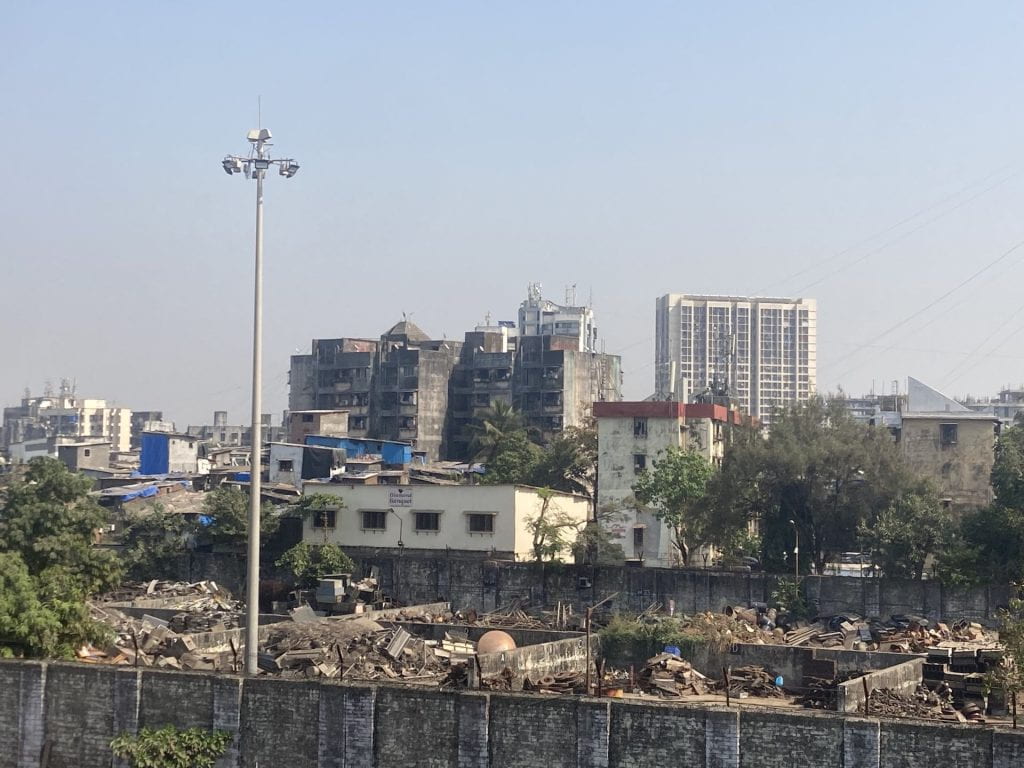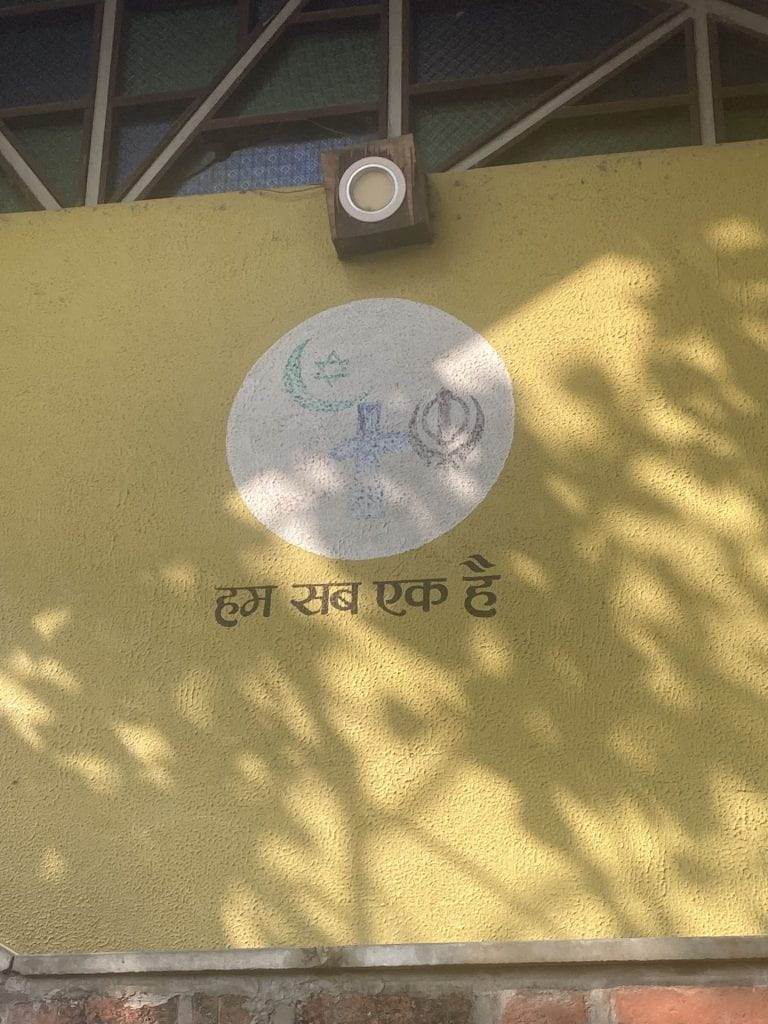Dharavi – Mumbai
The division line could not be any clearer; the smell of incense hit us as if we were crossing a threshold. More obvious signs of Hindu identity became quickly clearer; swastikas and a mandir (temple) all came into view as we turned the corner out of the dark and narrow streets from the Muslim quarter – an area equally marked by flags with crescent moons and men with long beards. Outside the mandir, our guide, Rakesh, told us why this contrast was so stark. In 1992, communal riots convulsed India after a masjid (mosque) in Ayodhya dating back to the Mughal period was smashed to the ground at the hands of an angry Hindu mob, believing that its site was the birthplace of Rama. Hindus and Muslims across the country, and in Dharavi, turned against one another. Rakesh told us his teacher was killed in these riots; his father told him to stay inside. “They do not see children; they only see Hindu or Muslim.” The government reported 900 people were killed; however, some estimates say much more. Hearing Rakesh’s personal experience with these riots made them very real, instead of something theoretical that I had studied before in Politics. It was deeply saddening and disturbing to hear about the personal impact of these riots. This moment of talking with Rakesh stuck with me after we left Dharavi.

After Mumbai, we took a train to Ahmedabad, the capital of Gujarat state, the home state of current Indian Prime Minister Narendra Modi –a controversial figure largely due to his actions while presiding as chief minister of this state during the 2002 Gujarat riots – another outburst of communal violence also in the wake of the Ayodhya dispute. Walking around the streets of Ahmedabad, it was hard not to think about what may have happened on that street corner or this park back in 2002. Setting people alight, beating, murder, all without any distinction other than “Hindu” or “Muslim.”
Given our previous experience with the “unity in chaos” that we have seen in day-to-day life here in India, this is a stark and sobering contrast, One of deep disunity between the many diverse groups in India. In India, one can see massively diverse communities living peacefully and cooperatively with one another, but one can also see a deep sense of distrust. After hearing about Rakesh’s experience, I thought it was worth talking about.
Sabarmati Ashram & School – Ahmedabad
Also, in Ahmedabad, we visited a School for a slum community of both Hindus and Muslims. It was supported by Manav Sadhna, an NGO attached to the Sabarmati Ashram – an ashram founded by Mahatma Gandhi; famously, he started his salt march against the British from here. At the school, we were greeted by our hosts in a courtyard in which a mosque was immediately next to a Hindu temple on the same premises. Our guide from the ashram told us that in this community, while the riots raged on outside the slum’s interior, they decided not to participate in the violence and to continue cooperating and living together in peace.
After the dancing performances we gave to one another at the school, the students were very excited to meet us and ask us our names and how old we were. Two boys were very keen to tell me they were friends: one Hindu and one Muslim. “Hindu-Muslim Bhai-Bhai,” they said, giving each other a hug.
Mahatma Gandhi said, “The law of love could be best understood and learned through little children,” and I think I saw this law of love clearly in action at this school. Hopefully, this law of love will be more of a defining part of India’s history in the future than the intolerance that has been seen increasingly frequently in recent years
